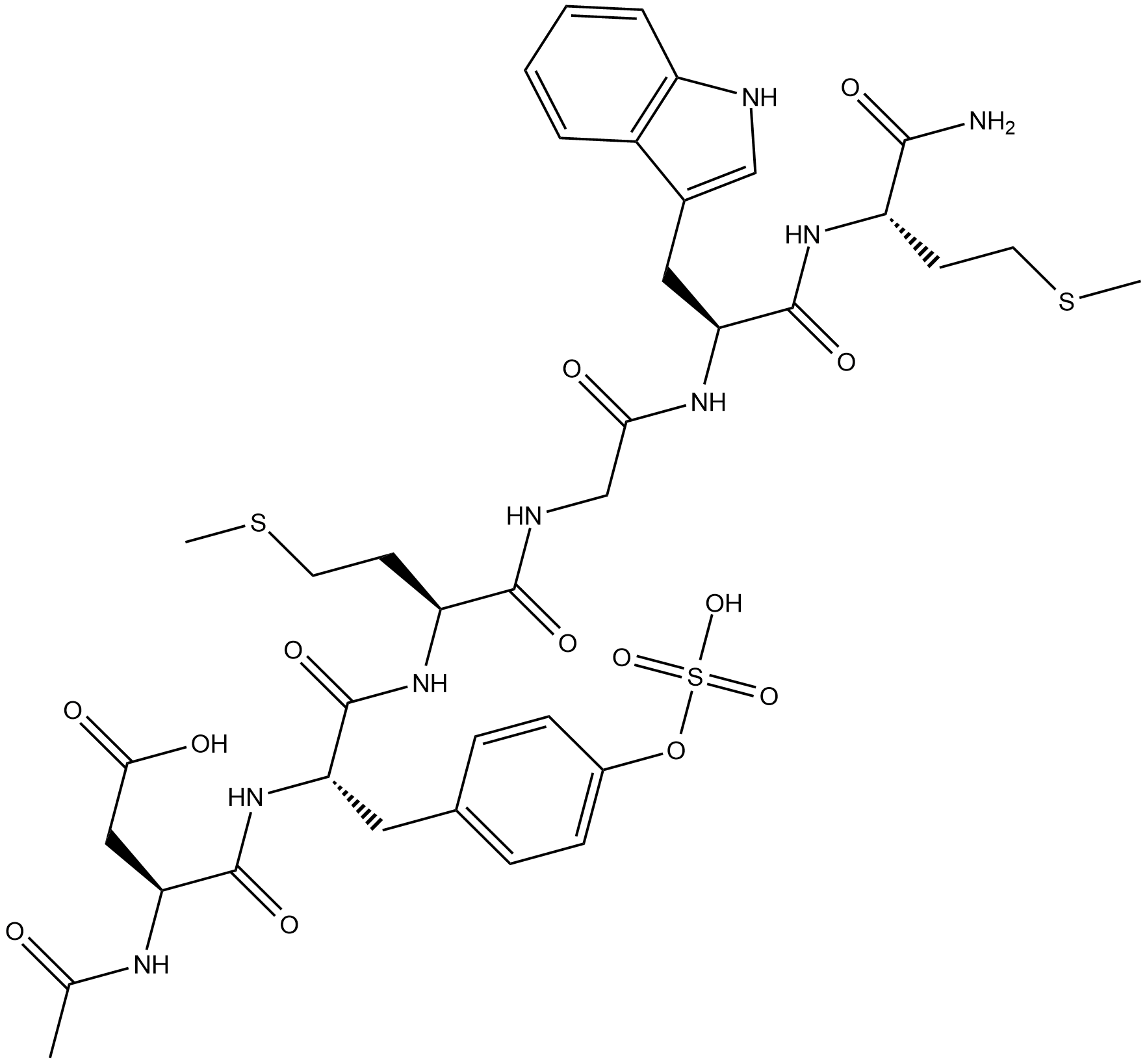CCK (26-31) (sulfated) (Synonyms: N-Acetyl Cholecystokinin (26-31), (sulfated)) |
| カタログ番号GC18553 |
CCK(26-31)は、腸管および脳に存在するペプチドホルモンであり、消化を刺激し、満腹感を調節し、不安に関与しています。CCK(26-31)はCCKのN末端フラグメントです。
Products are for research use only. Not for human use. We do not sell to patients.

Cas No.: 89911-65-9
Sample solution is provided at 25 µL, 10mM.
CCK (26-31) is an N-terminal fragment of CCK , a peptide hormone found in the intestine and brain that stimulates digestion, mediates satiety, and is involved in anxiety. The sulfated form of CCK (26-31) inhibits binding of [125I]CCK-33 to guinea pig cortical membranes by 21% when used at a concentration of 0.1 mM.
References:
[1]. 1. Raybould, H.E., and Lloyd, K.C. Integration of postprandial function in the proximal gastrointestinal tract. Role of CCK and sensory pathways Ann. N.Y. Acad. Sci. 713(1), 143-156 (1994).
[2]. Ondetti, M.A., Plu??ec, J., Sabo, E.F., et al. Synthesis of cholecystokinin-pancreozymin. I. The C-terminal dodecapeptide J. Am. Chem. Soc. 92(1), 195-199 (1970).
[3]. Knight, M., Tamminga, C.A., Steardo, L., et al. Cholecystokinin-octapeptide fragments: Binding to brain cholecystokinin receptors Eur. J. Pharmacol. 105(1-2), 49-55 (1984).
Average Rating: 5 (Based on Reviews and 11 reference(s) in Google Scholar.)
GLPBIO products are for RESEARCH USE ONLY. Please make sure your review or question is research based.
Required fields are marked with *




















